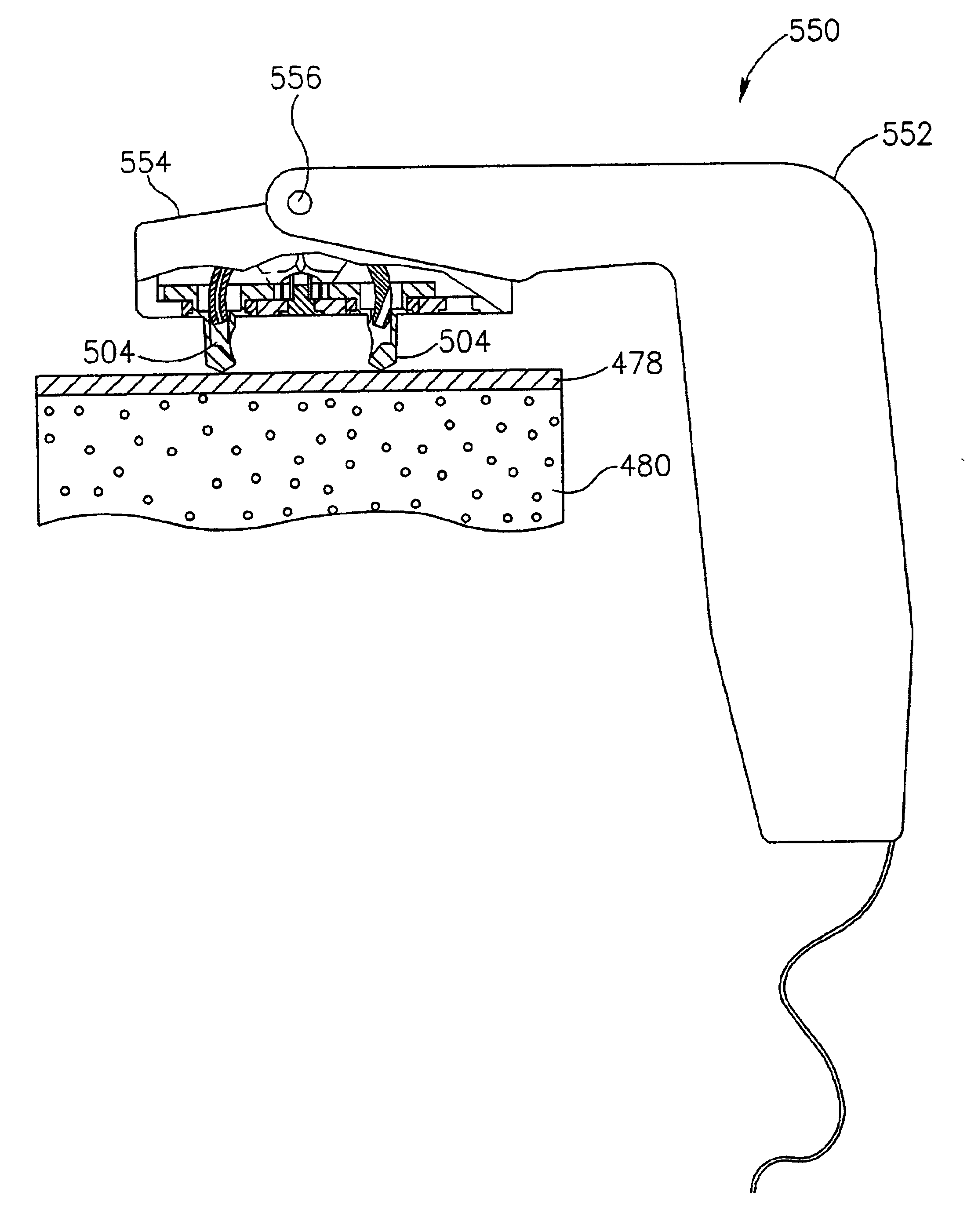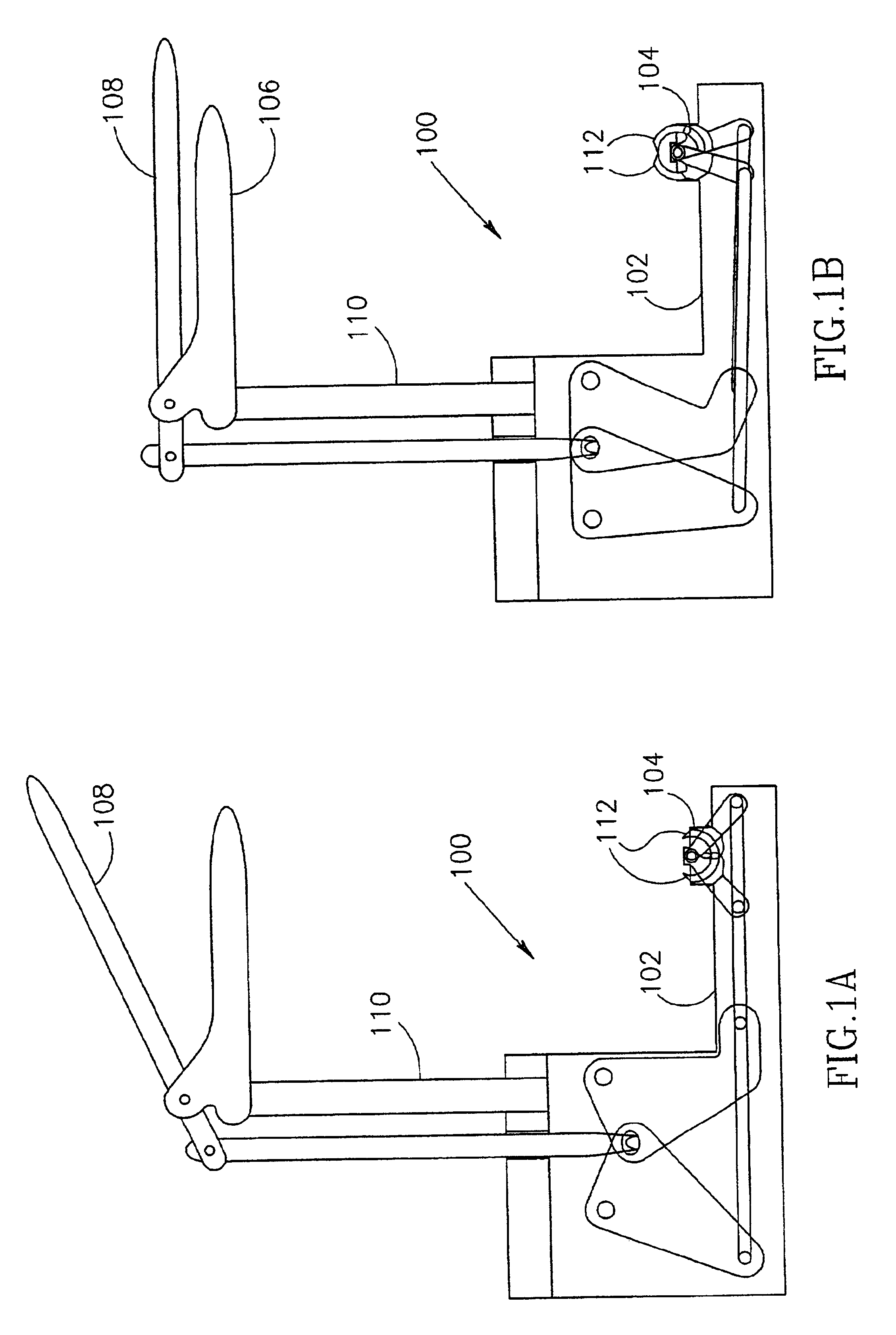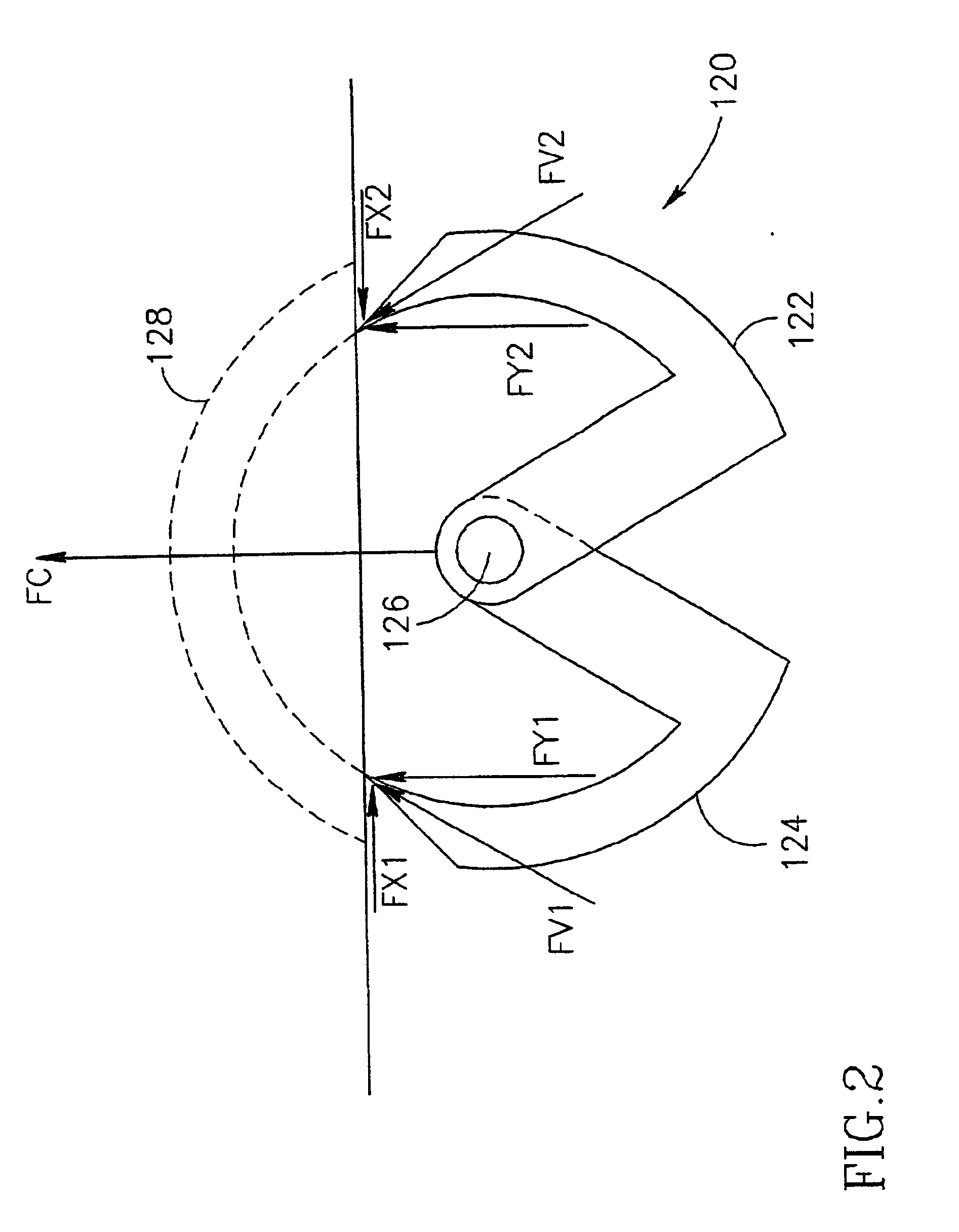Bone suturing device
a bone suturing and bone technology, applied in the field of bone suturing devices, can solve the problems of bone trauma, high cost, and high complexity of the screwdriver used to perform the task, and achieve the effect of reducing the damage to the bon
- Summary
- Abstract
- Description
- Claims
- Application Information
AI Technical Summary
Benefits of technology
Problems solved by technology
Method used
Image
Examples
Embodiment Construction
FIGS. 1A and 1B are schematic illustrations of a bone-boring device 100, in un-activated and activated configurations, respectively, in accordance with a preferred embodiment of the invention. Device 100 generally comprises a base 102 including a bone-boring head 104, a handle 106, possibly including a lever 108 and a shaft 110 interconnecting the handle and the base. In FIG. 1A, a pair of needles 112 of bone-boring head 104 are retracted. In FIG. 1B, when lever 108 is moved towards handle 106, needles 112 rotate and extend, boring a hole in adjacent bone.
The device shown in FIG. 1A and 1B is suitable for attaching sutures to an inside face of a pubic bone. Thus, needles 112 extend towards the handle. In use, boring-head 104 is placed against the pubic bone, upwards pressure being applied to handle 106 to assure good contact between the boring head and the bone, and then lever 108 is depressed to advance needles 112 and bore the hole. In devices for other uses, bone-boring head 104 ...
PUM
 Login to View More
Login to View More Abstract
Description
Claims
Application Information
 Login to View More
Login to View More - R&D
- Intellectual Property
- Life Sciences
- Materials
- Tech Scout
- Unparalleled Data Quality
- Higher Quality Content
- 60% Fewer Hallucinations
Browse by: Latest US Patents, China's latest patents, Technical Efficacy Thesaurus, Application Domain, Technology Topic, Popular Technical Reports.
© 2025 PatSnap. All rights reserved.Legal|Privacy policy|Modern Slavery Act Transparency Statement|Sitemap|About US| Contact US: help@patsnap.com



